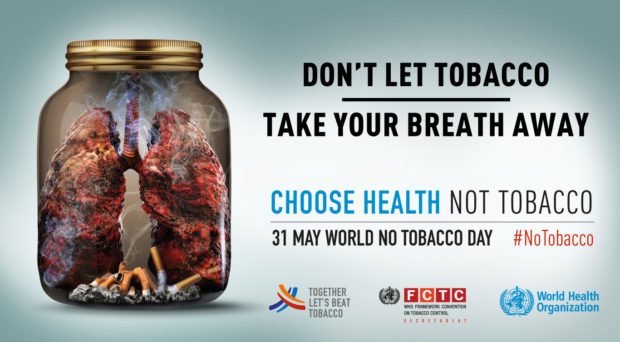
Each year on May 31st, World No Tobacco Day is held to raise awareness on the harmful effects of smoking and to discourage tobacco use. One of the 2019 goals focuses on raising awareness on the “feasible actions and measures that key audiences, including the public and governments, can take to reduce the risks to lung health posed by tobacco”.
While there are well-known interventions that can help people stop smoking, they may not be appropriate for all people in all places. Across various settings, technology can offer new ways of helping people to stop smoking. This may be particularly useful in targeting groups that are not easily reached by standard interventions.
For instance, young people, a group particularly at risk of smoking harms, may respond positively to advice offered by social media. 87% of American young people use Facebook while online, with 70% of them using it daily. Researchers have explored using social media platforms such as Facebook to deliver and improve interventions targeting smoking.
Researchers were able to present social media posts to an online focus group of young people. The young people were in turn able to rate text and images that formed part of the intervention, allowing it to be rapidly refined and improved.
A study in Turkey also examined technology as a tool in smoking cessation. Participants received their normal care from physicians trained on quitting tobacco, but also received motivational messages delivered over WhatsApp. When comparing this delivery method to others such as SMS, this can offer advantages in terms of cost, encryption and improved multimedia. After six months of receiving additional smoking cessation care via WhatsApp, patients were 2.3 times more likely to be abstinent from tobacco compared to the control group.
After six months of receiving additional smoking cessation care via WhatsApp, patients were 2.3 times more likely to be abstinent from tobacco compared to the control group.
Effective interventions don’t always need to be hi-tech. Smoking cessation interventions developed with high income countries in mind may not take into account local factors, making them unsuitable for some Low and middle income countries (LMICs). This is challenging in light of the fact that LMICs have some of the highest rates of smoking. In Southeast Asia, for example they can be as high as 40%.
In northern Thailand, a randomized controlled trial was conducted recruiting smokers who also had diabetes and hypertension. The intervention included assistance from a family member. Family members were given diaries and colored stickers to record smokers’ cessation attempts. The assumption was that family members would be able to motivate smokers, while reminding them of their smoking behaviors.
Six months later, people who received this intervention were significantly more likely to have stopped smoking than smokers who had received standard care. This is especially encouraging because elements of the intervention, such as the family member diary, are low cost and easy to implement in LMIC settings.
Despite how difficult many smokers find it to quit, the above examples show the important role support plays, whether by family, or delivered online. Since standard care may not be effective for all smokers, and cannot reach everyone, innovation is needed to develop feasible interventions that can reduce the harm caused by tobacco.
Comments